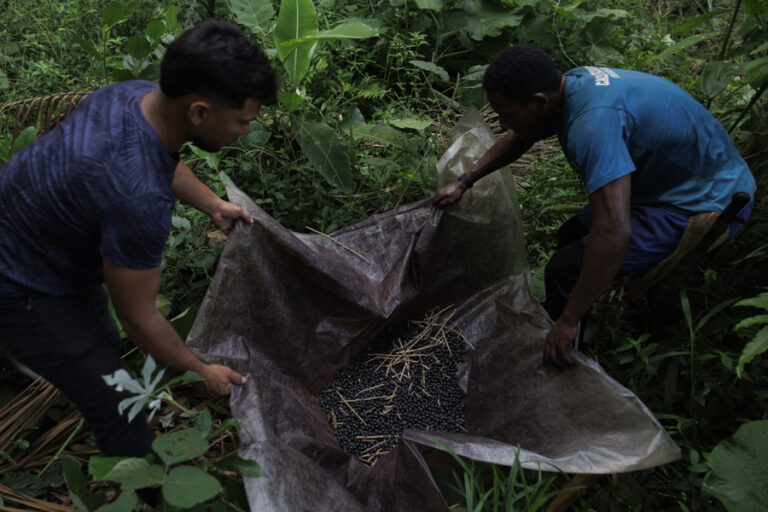
The agricultural experiment that aims to bring green back to the deforested Amazon.
Mamuí (Brazil), Oct 3 (EFE)
The farmers of Mamuí, a community located in one of the most deforested areas of the Amazon, are leading a change in mentality and method in agricultural activity in Brazil that seeks to reforest lands that were previously cleared.
The revaluation of certain Amazonian fruits such as açaí, as well as technical assistance from the government, have enabled an ecological shift among former deforesters, although the model is still limited in scope in the state of Pará, host of the next UN climate summit (COP30).

Chap, chap. The boots of Sadias Pinheiro, a 72-year-old farmer, sink into the damp earth where he recently planted açaí; after years of disappearance, the spring has begun to show signs of life again.
“The ground was all cracked in the summer from the cattle, and look at it now,” he told EFE.

In the early 2000s, when Pinheiro and 70 other families settled illegally in a patch of virgin forest, they took the same old path: cutting down trees, burning them, and planting grass for their cows.
It was a time of record-breaking deforestation in the Amazon—27,700 square kilometers in 2004 alone, an area the size of Haiti—and southern Pará was transformed into a plain of barren lands dotted with patches of jungle.

In Mamuí, of the 25 square kilometers of settlement, less than one square kilometer retained native vegetation, according to Pinheiro’s calculations.
Logging was also a way of demonstrating to the authorities that they were worthy of a property title.
“We had to cut down the land and build a fence so the government would understand that we really wanted to live here,” Pinheiro explains, before acknowledging with a hint of remorse that they had caused “a crazy mess.”

Advantages of sustainable agriculture
A few years ago, the Brazilian Agricultural Research Corporation (Embrapa), a public institution dedicated to agricultural innovation, knocked on the doors of the residents of Mamuí with a proposal: to install agroforestry systems.
The idea was to dedicate part of the land used for livestock to planting a combination of large trees typical of the jungle and regional fruit species such as cacao and açaí, which generate income.

“In our discussions, we brought up the topic of environmental awareness, something that was taboo… talking about environmental legislation was almost offensive,” recalls Michelliny Bentes, the project coordinator, in an interview with EFE.
To overcome concerns, Embrapa offered improved seeds and fertilizer free of charge, as well as technical support in the field to help them comply with the environmental regulation, which requires preserving vegetation in areas such as riverbanks and springs.

If a farmer fails to meet these requirements, he or she may lose access to subsidized credit or be unable to sell his or her produce.
The package eventually overcame the resistance of a handful of farmers like Mauricio Batista, who had previously attempted to plant cocoa without much success due to a lack of knowledge.
After three years of support, Batista now has six hectares of açaí, cacao, and plantain planted near the spring to prevent erosion and improve water quality.

He still keeps cows, but they are no longer his main source of income: he sells cacao for 30 reais ($5.60 / €4.80) per kilo and açaí for 16 reais, compared to eight reais per kilo of beef. He now plans to expand his farming area, this time without the need for subsidies.
“I embraced the cause,” the 53-year-old farmer told EFE.
Given the level of destruction that existed before, Bentes sets realistic goals: “If forest cover goes from zero to 30%, that’s already a gain… it’s small, but it’s progress.”

Although Embrapa would need more resources to scale the project, residents of Mamuí who once rejected switching to sustainable agriculture have begun to take note, according to Batista.
“They’re opening their eyes, because the law requires it, but also because they see that nature is a good place to live,” he says.





